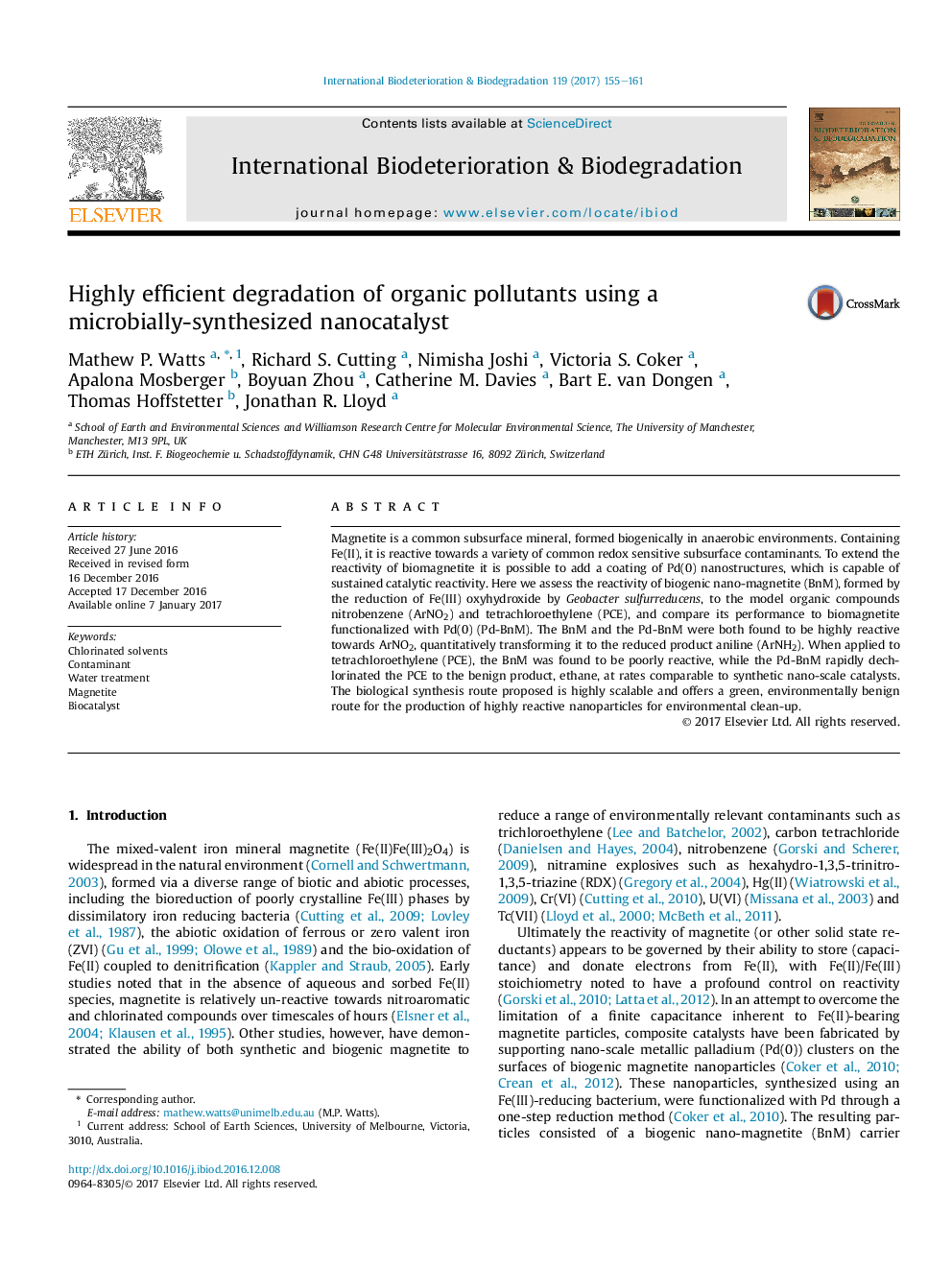| Article ID | Journal | Published Year | Pages | File Type |
|---|---|---|---|---|
| 5740442 | International Biodeterioration & Biodegradation | 2017 | 7 Pages |
â¢Biosynthesis offers environmentally benign production of reactive nanoparticles.â¢Quantitative conversion of nitrobenzene to aniline by magnetite and catalyst.â¢No loss of reactivity despite re-spiking nitrobenzene.â¢Biogenic magnetite unable to dechlorinate PCE.â¢Bio-nanocatalyst highly reactive towards dechlorinating PCE to ethane.
Magnetite is a common subsurface mineral, formed biogenically in anaerobic environments. Containing Fe(II), it is reactive towards a variety of common redox sensitive subsurface contaminants. To extend the reactivity of biomagnetite it is possible to add a coating of Pd(0) nanostructures, which is capable of sustained catalytic reactivity. Here we assess the reactivity of biogenic nano-magnetite (BnM), formed by the reduction of Fe(III) oxyhydroxide by Geobacter sulfurreducens, to the model organic compounds nitrobenzene (ArNO2) and tetrachloroethylene (PCE), and compare its performance to biomagnetite functionalized with Pd(0) (Pd-BnM). The BnM and the Pd-BnM were both found to be highly reactive towards ArNO2, quantitatively transforming it to the reduced product aniline (ArNH2). When applied to tetrachloroethylene (PCE), the BnM was found to be poorly reactive, while the Pd-BnM rapidly dechlorinated the PCE to the benign product, ethane, at rates comparable to synthetic nano-scale catalysts. The biological synthesis route proposed is highly scalable and offers a green, environmentally benign route for the production of highly reactive nanoparticles for environmental clean-up.
